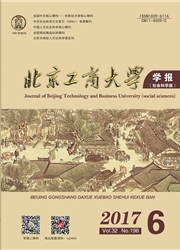

 中文摘要:
中文摘要:
2008年的次贷金融危机和随后的欧美主权债务危机使得系统性风险日益受到世界各国的高度关注。文章构建了反映系统性风险与宏观经济稳定的指标体系,运用面板数据向量自回归方法设计了系统性风险与宏观经济稳定间的影响机制模型,并结合全球56个主要国家的相关数据,对发达国家和发展中国家在金融危机前后系统性风险和宏观经济稳定的相互影响机制进行了实证分析和国际比较。研究结果发现:系统性风险指标对宏观经济稳定的影响作用中,股票指数波动率的正向影响最为明显;金融危机后宏观经济稳定状况对系统性风险的影响要大于金融危机前;发达国家的系统性风险指标对宏观经济的影响明显,而发展中国家的宏观经济指标对系统性风险的影响更为显著。
 英文摘要:
英文摘要:
The subprime mortgage crisis in 2008 and the subsequent European and American sovereign debt crisis pushedworldwideattention to the systemic risk. This paperselects an index system which reflects systemic risk and macroeconomic stability and uses the panel data vector auto regression method to construct their interaction mechanism. Combiningrelevant data of 56 countries, we have an empirical analysis and compare the interaction mechanisms between systemic risk and macroeconomic sta- bility in developed and developing countries before and after the financial crisis. We find: among systematic risk indicators influencing macroeconomic stability, the positive impact on stock index volatility is most obvious; macroeconomic stability condition after finance crisis has a greater impact on systematic risk than that before finance crisis; systematic risk indicator of developed country affects more outstanding than developing country while macroeconomic index of developing country have more remarkable influence on systematic risk.
 同期刊论文项目
同期刊论文项目
 同项目期刊论文
同项目期刊论文
 期刊信息
期刊信息
